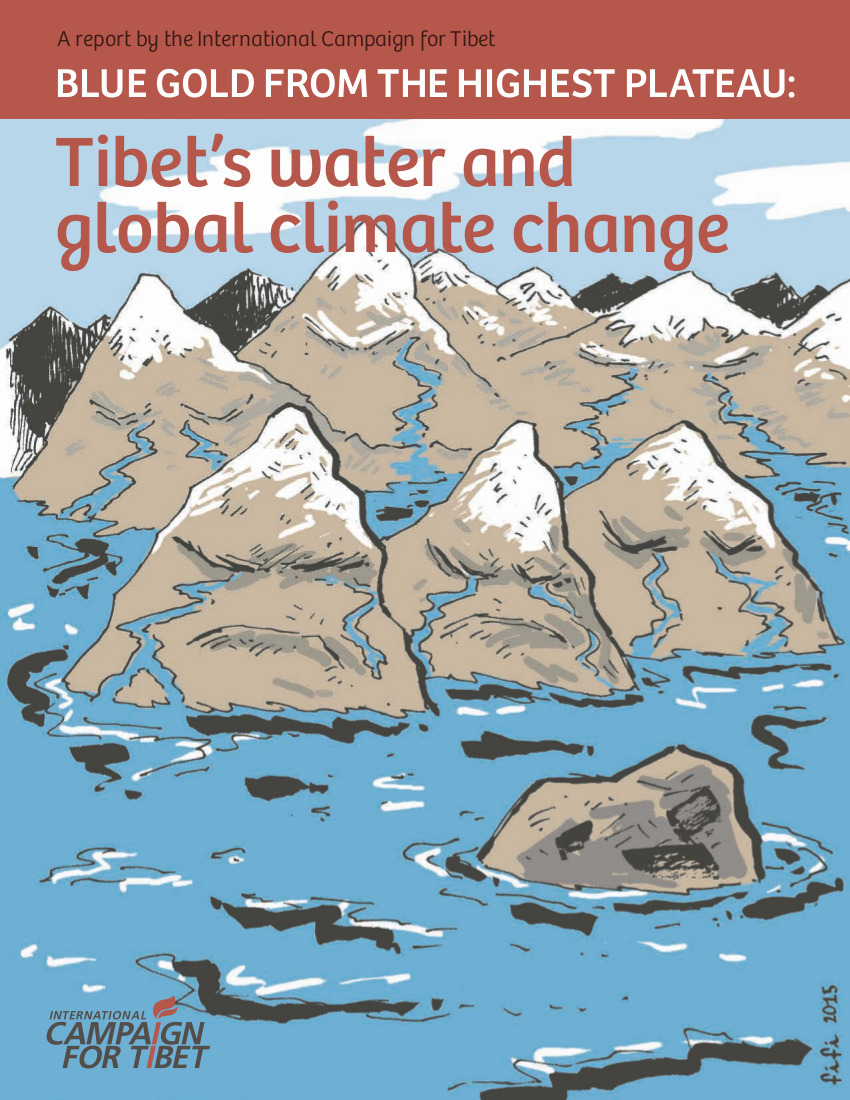As the world’s leaders meet in Paris this week for critical climate change talks, new findings by the International Campaign for Tibet reveal that Tibet’s fragile environment, which is warming faster than anywhere else, is of critical global importance. But almost unnoticed by the rest of the world, China’s policies are re-shaping the landscape of the earth’s highest and largest plateau with devastating consequences.
ICT’s new report, ‘Blue gold from the highest plateau: Tibet’s water and global climate change’, was published in Paris on December 8 (2015).
Matteo Mecacci, President of the International Campaign for Tibet, said: “As talks began in Paris, both the Dalai Lama and the Beijing leadership have expressed alarm about the scale of the environmental crisis in Tibet, the ‘Roof of the World’. Known as the earth’s ‘Third Pole’, because it contains the biggest reserves of freshwater outside the Arctic and Antarctic, Tibet’s changing climate not only affects the monsoon in Asia, but also weather in Europe. As the source of most of Asia’s major rivers, including the Yangtze, the Mekong and the Brahmaputra, Tibet’s fragile ecology is of critical importance to hundreds of millions of people in the water-dependent societies downstream.
“ICT’s new report reveals why Tibet matters to all of us, although few people know of its significance, and provides a roadmap for a way forward for the urgent task of conserving the plateau and its ‘blue gold’ that is in the interests of China and the rest of the world as well as the Tibetan people.”
‘Blue Gold from the Highest Plateau’ documents:
- In the “greatest water grab in history”, but almost unnoticed by the rest of the world, multiple dams are being built on all the major rivers running off the Tibetan plateau by powerful state-owned Chinese consortiums. There are plans for a mammoth water-diversion scheme across some of the restive areas of Tibet transferring water to parched northern China, despite the high risk and concern downstream as the plateau is one of the earth’s most seismically active regions.
- Large-scale mining in copper, gold, silver, chromium and lithium, signaling the remote region’s integration into the Chinese industrial economy, is having a devastating impact, and Tibetans who express even moderate concern risk being imprisoned, tortured, or killed.
- The Chinese government has accelerated implementation of policies to displace nomadic pastoralists from the vast Tibetan grasslands, a massive social engineering campaign that threatens to eviscerate a sustainable way of life uniquely adapted to the harsh landscape of the high plateau. This is despite a scientific consensus in the PRC and beyond that indigenous stewardship and herd mobility is essential to the health of the rangelands and helps mitigate climate change.
- In the same month as global climate change talks in Paris, the Chinese authorities announced a dramatic expansion of the bottled water industry in Tibet, despite shrinking glaciers and the already apparent impact of the rush to exploit Tibet’s rivers.
- A combination of urbanization, intensified militarization linked to China’s strategic aims, infrastructure construction and warming temperatures are creating an ‘ecosystem shift’ in Tibet. This involves irreversible environmental damage, including the predicted disappearance of large areas of grasslands, alpine meadows, wetlands and permafrost on the Tibetan plateau by 2050, with serious implications for environmental security in China and South Asia.
- The Chinese leadership represents policies damaging to Tibet’s landscape as ‘mitigation’ of climate change in a misleading attempt to gain endorsement from international institutions and governments for the creation of national parks on the plateau dependent upon the removal of Tibetan nomads from the grasslands.
Richard Gere, Chairman of the International Campaign for Tibet, said: “The Chinese leadership has acknowledged at the highest levels the scale of the environmental crisis it faces. As increasing numbers of Chinese environmentalists and experts have made clear, this must include conserving the Tibetan plateau, which obviously include dialogue and genuine participation of the Tibetan people. This report presents detailed recommendations on how this can be done and demonstrate that a new approach is urgently needed.”
To read the report, please click here.
